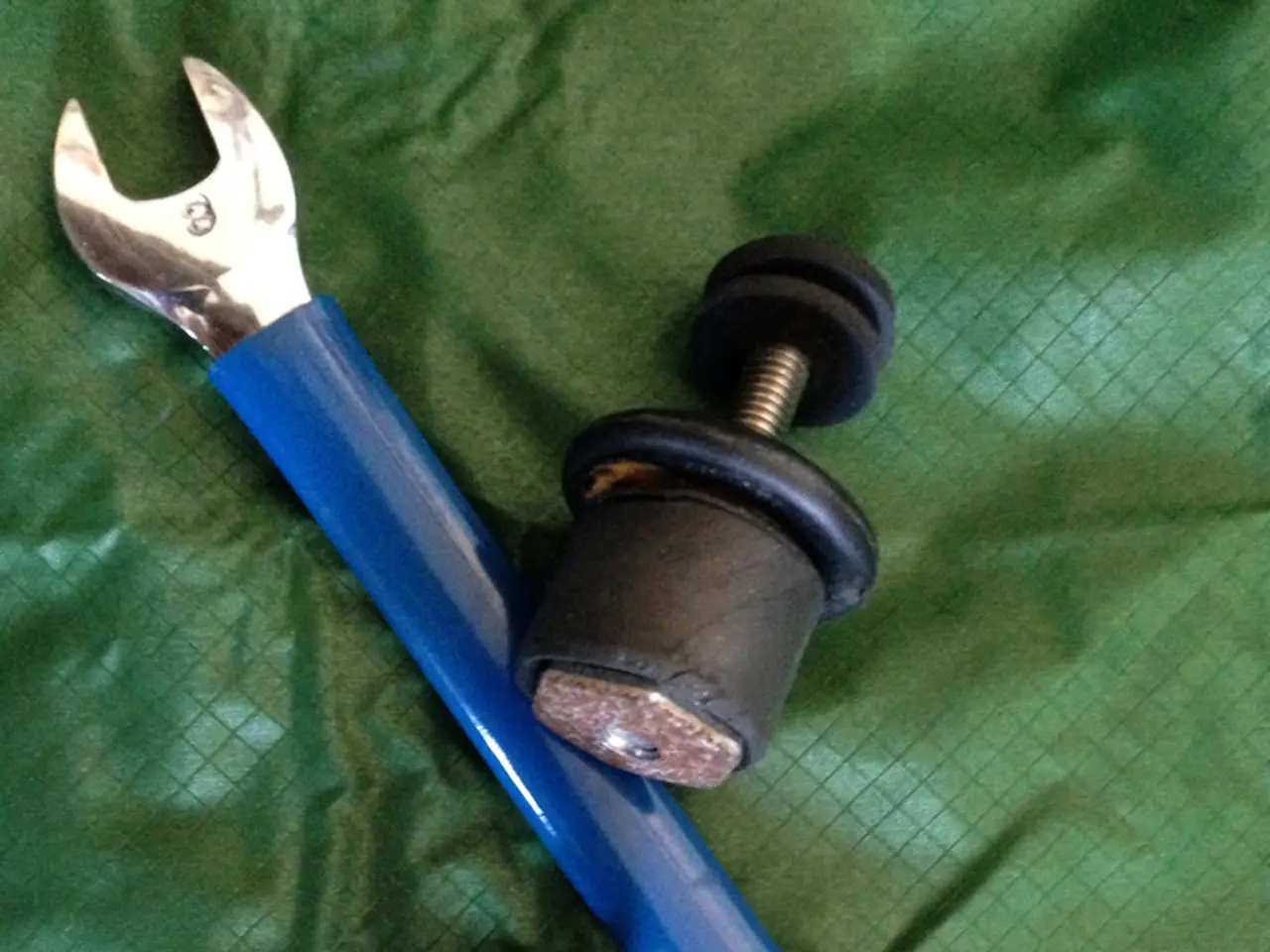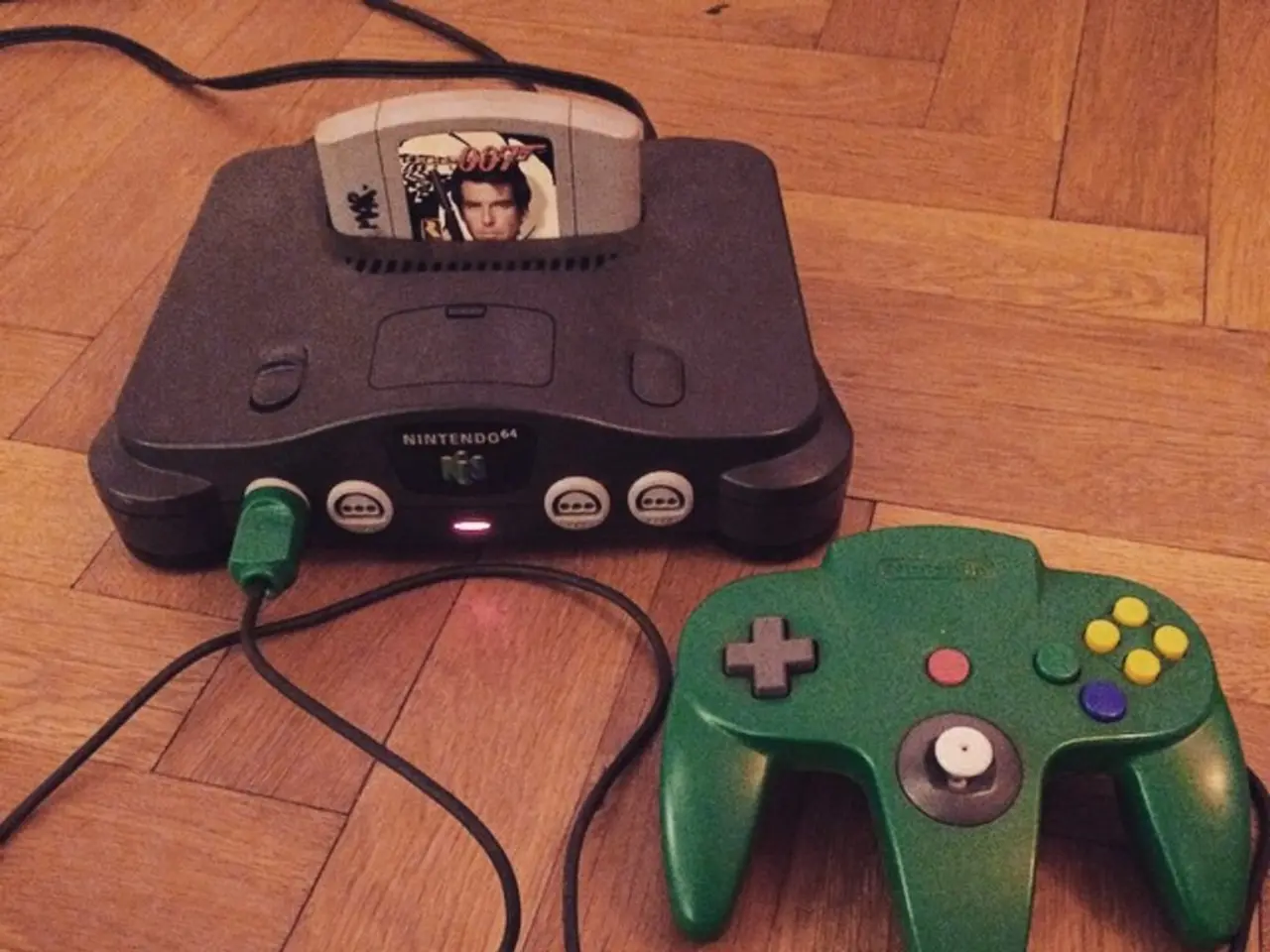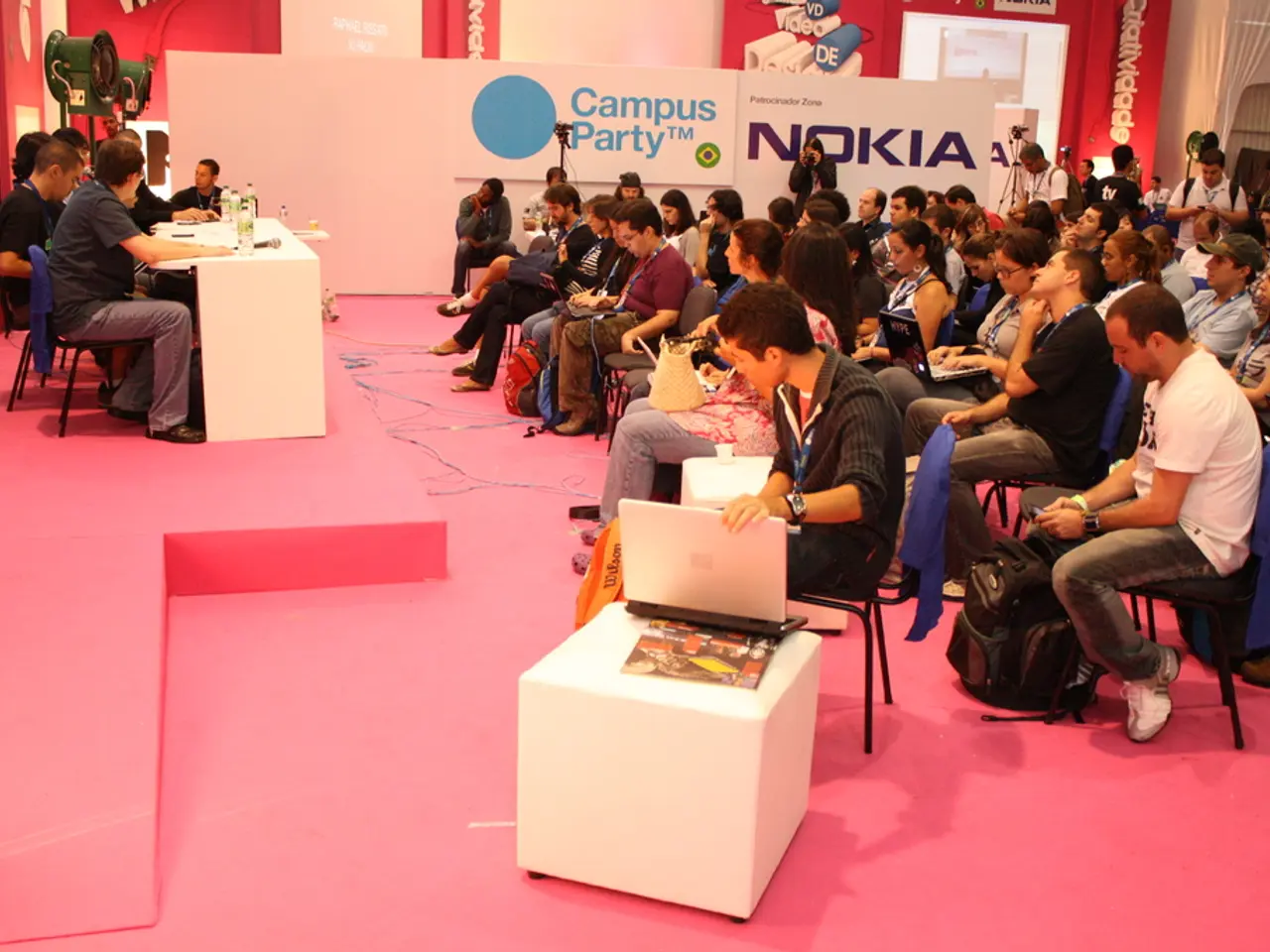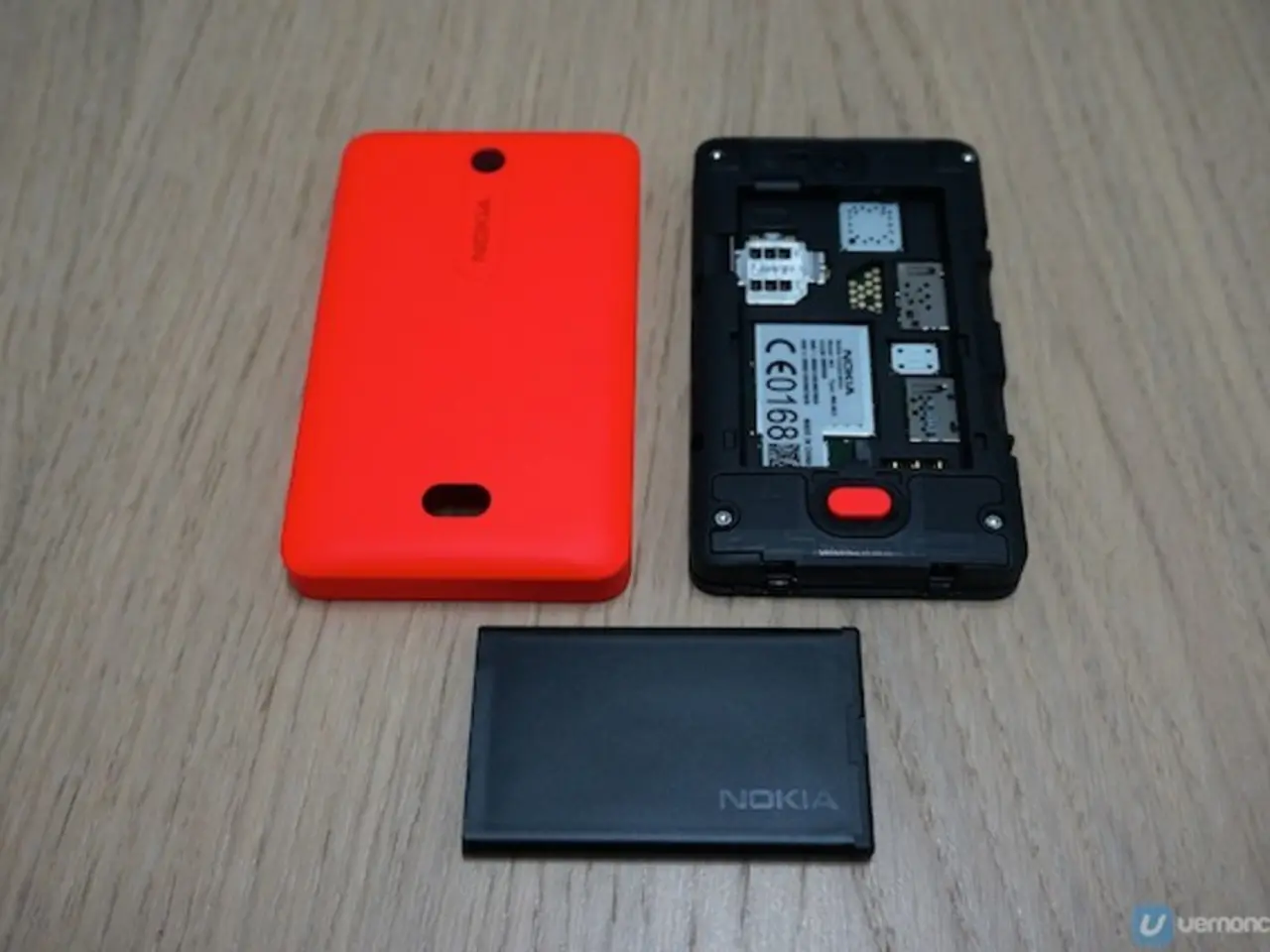Robotic sheet displays shape-shifting abilities, moves, folds, and grips without any mechanical joints
Flexible Robotic Sheet Developed by KAIST Offers Adaptive Solutions for Next-Generation Robots
The Korea Advanced Institute of Science and Technology (KAIST) has made a groundbreaking development in the field of robotics. They have created a programmable robotic sheet that can change shape, move, and grasp objects without the need for mechanical hinges or external reconstruction [1].
The innovative robotic sheet is composed of a thin, flexible polymer sheet embedded with a dense network of metallic resistors. These resistors act as both heaters and sensors, enabling the sheet to bend when heated and reset when cooled, while monitoring its own folding state without the need for external hardware [1].
The system integrates genetic algorithms and deep neural networks to power the decision-making process behind the folding behavior, enabling adaptive responses to various inputs [1]. This design allows the sheet to be controlled entirely by software, enabling reprogrammable folding patterns and shapes in real time with precise temperature feedback.
The robotic sheet executes these commands autonomously, using real-time temperature feedback to maintain precision [1]. A closed-loop control system further refines the output by correcting for environmental changes, such as temperature fluctuations that usually impair heat-based systems [1].
The potential applications for this technology are vast. It could pave the way for next-generation robots that physically adapt to their environment in real time, making them suitable for various fields such as disaster response, personalized medical devices, and even space exploration [1].
The team plans to improve the sheet's load-bearing capacity, speed up cooling times, and develop integrated electrodes without external wiring [1].
Key Features of the Programmable Robotic Sheet
- Composition: Flexible polymer sheet embedded with metallic resistor network
- Mechanism: Resistors heat to bend/fold sheet; sensors monitor temperature and folding state
- Control: Software-controlled with AI (genetic algorithms, deep learning) for real-time reprogramming
- Movements: Folding, crawling, gripping, walking with precise heat feedback
- Folding range: -87° to 109°
- Operating temperature range: 30°C to 170°C
- Applications: Disaster response, personalized medical devices, space exploration
This development marks a significant advance in creating soft, adaptable robots that operate through programmed heat activation and shape morphing without mechanical hinges or external actuation devices [1].
The National Research Foundation of Korea supported the research under the Ministry of Science and ICT. The team was led by Professors Kim Jeong and Park In-kyu of KAIST's Department of Mechanical Engineering. Users can reprogram the shape, fold positions, and directions of the robotic sheet on the fly using a simple interface, allowing it to respond to software commands and overcome the need for physical reconfiguration to switch tasks [1].
The team refers to this material's ability to think through its shape as "morphological intelligence" [1]. This development is set to revolutionize the field of robotics, offering solutions to a long-standing problem: creating systems that can change form based on task or environment without needing to be rebuilt or redesigned each time.
[1] Park, S., et al. (2021). A Programmable Robotic Sheet with Morphological Intelligence. Advanced Materials. DOI: 10.1002/adma.202103985 [3] KAIST Newsroom. (2021, July 15). A Programmable Robotic Sheet with Morphological Intelligence. Retrieved from https://www.kaist.ac.kr/main/news/view/16549
- This innovative robotic sheet, developed by KAIST, provides a breakthrough in mechanical engineering with its integration of technology and science, as it's composed of a flexible polymer sheet embedded with a network of resistors acting as both heaters and sensors.
- Remarkable adaptive solutions for future robots are offered by this technology, as the morphological intelligence of the robotic sheet allows it to change shape, move, and grasp objects, with the potential applications spanning from disaster response to space exploration.
- The implementation of genetic algorithms and deep neural networks in the decision-making process behind the folding behavior of the robotic sheet demonstrates the impact of innovation in robotics, enabling a reprogrammable, real-time response to various inputs and making the sheet entirely software-controlled.




